LINKWASHINGTON — The Missile Defense Agency is deeming the first salvo test — conducted today — of its homeland missile defense system against an intercontinental ballistic missile threat a success, according an agency statement.
The MDA last tested the Ground-Based Midcourse Defense System’s (GMD) Ground-Based Interceptors (GBI) in a full-up test against an ICBM target in May 2017.
At the time, the MDA’s director said the agency was next shooting to conduct a more complex salvo test involving two GBIs against an ICBM because firing off two GBIs against one target is more operationally realistic and important in proving out the effectiveness of the overall system.
In the test, the lead GBI destroyed the ICBM’s reentry vehicle “as it was designed to do,” according to the agency’s statement.
The trailing GBI “then looked at the resulting debris and remaining objects, and, not finding any other reentry vehicles, selected the next ‘most lethal object’ it could identify, and struck that, precisely as it was designed to do,” the statement adds.
The ICBM target was launched from the Reagan Test Site on Kwajalein Atoll in the Marshall Islands, which is over 4,000 miles away from the GBI interceptors buried in silos in the ground at Vandenberg Air Force Base, California.“This was the first GBI salvo intercept of a complex, threat-representative ICBM target, and it was a critical milestone,” MDA Director Air Force Lt. Gen. Samuel Greaves said in the statement.
US military, technology, arms, tactics
Re: US military, technology, arms, tactics
Re: US military, technology, arms, tactics
A few videos are in this twitter thread - https://twitter.com/nktpnd/status/11102 ... 38880?s=19
No actual hit being shown though.
No actual hit being shown though.
Re: US military, technology, arms, tactics
The video shows the intercept/hit (first GBI).. 1:50 mark. I assume the sensor view from the 2nd GBI is going to be highly sensitive and not something that is releasable. Also worth noting that this and the prior successful GBI test were all performed with inadequate discriminating sensors as per the MDA's own admission (they have the UHF band EW radar and the deployed SBX and TPY-2's and other L band radars). Those UHF and L band radars are practically useless for discrimination in an OT setting when countermeasures are involved hence stressing the importance of being able to deploy the SBX (a test asset rushed to operational service) and the forward deployed TPY-2 X band radars.( which only track the very early stages of ICBM launch).Prasad wrote:A few videos are in this twitter thread - https://twitter.com/nktpnd/status/11102 ... 38880?s=19
No actual hit being shown though.
Once the new Long Range Discrimination Radar in Alaska is declared operational (2021) and once it supported by other sensors in Hawaii (2023-2024) and elsewhere (possibly California in 2025-2026) the system's ability to discriminate is going to receive a major boost even though the compromise S-band LRDR solution is not going to be as effective as the initially planned 100K element X-band LRDR (turned out to be cost prohibitive). The TPY-2's already feature GaN X-band modules now but all the modifications to existing/deployed units won't be complete till the middle of next decade and once the LRDR is declared operational in 2021, the SBX will also get new GaN modules along with the same processor as the TPY-2 as it is supposed to enter dry dock around that time frame for a major overhaul.
While a lot of focus goes into KV's capabilities and reliability (as it should) it is easy to forget the importance of the discriminating sensors in an operational scenario because a vast majority, if not all, of the discrimination work is going to be done on the ground using these sensors..the GBI and the associated KV is only going to be as good as where you tell it to "look" as its job in the end game is, for the most part, to focus on a very narrow part of the threat space (provided by the discriminating sensors) and pick its target (hopefully the right one).
Interestingly, the patch shows that the Director Operational Test & Evaluation (DOT&E) was a partner on this Operational Test so we will also get much more detail on what the primary and secondary objectives were in his report in late 2019/ early 2020..
Re: US military, technology, arms, tactics
Two Dozen F-22 Raptors Perform “Elephant Walk” As Part Or Readiness Exercise at Joint Base Elmendorf-Richardson, Alaska.

Some really cool photographs of two dozen F-22s from the 3rd Wing and 477th Fighter Group taxiing in close formation with an E-3 Sentry and a C-17 Globemaster III during a Polar Force exercise at Joint Base Elmendorf-Richardson, Alaska, were posted online on Mar. 26, 2019. Both types are based at JBER.
The aircraft staged what is known as an “Elephant Walk”, a kind of drills during which combat planes (including tankers) taxi in close formation in the same way they would do in case of a minimum interval takeoff, then, depending on the purpose of the training event, they can either take off or return back to their parking slots.

Re: US military, technology, arms, tactics
Interesting Payload (and range) comparisons between the F-35 and F-16 which sort of sheds light on the range/payload requirements for the F-35A given that it was most directly a type replacement for the F-16C.
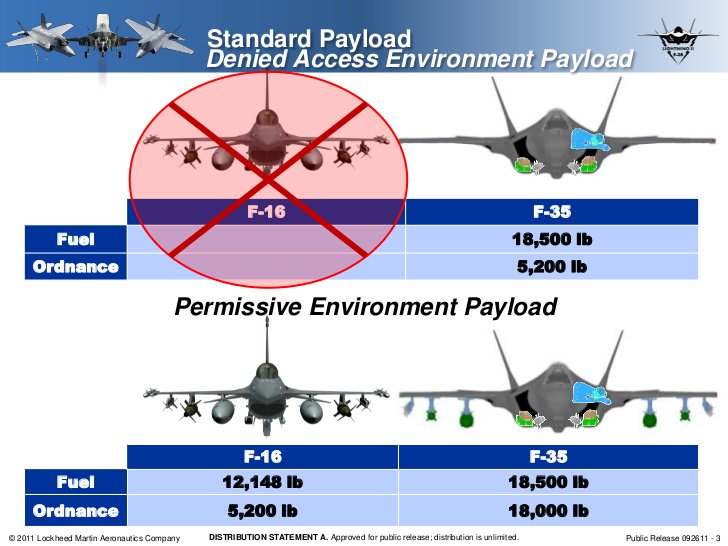

Re: US military, technology, arms, tactics
https://www.af.mil/News/Article-Display ... b-21-base/The Air Force announced Ellsworth Air Force Base, South Dakota, has been selected as the preferred location for the first operational B-21 Raider bomber and the formal training unit, March 27.
Whiteman AFB, Missouri, and Dyess AFB, Texas, will receive B-21s as they become available.
The Air Force used a deliberate process to minimize mission impact during the transition, maximize facility reuse, minimize cost and reduce overhead.These three bomber bases are well suited for the B-21," said Secretary of the Air Force Heather A. Wilson. “We expect the first B-21 Raider to be delivered beginning in the mid-2020s, with subsequent deliveries phased across all three bases.”
Assuming 2025 as "Mid 2020s", this means first flight should occur around 2022 timeframe with a 5 year Dev. test timeframe. The first 2-3 aircraft will be at Edwards to support test and LRIP-1 will likely be 1 or 2 aircraft. Northrops production contract awarded alongside the R&D contract covered 21 aircraft over 5 LRIP lots so LoT 3 will likely head to operational base by mid 2020s.
My best guess since only the contract value and amounts were announced and not schedules -
LOT 1 - 1 aircraft
LOT 2 - 2 aircraft
LOT 3 onwards - 6 aircraft
Or 1 aircraft in LOT-1 and 5 from Lot 2 onwards.
Re: US military, technology, arms, tactics
AIR International April 2019 coverage on GE's XA-100 Adaptive Engine and more on the Phase 1 and Phase 2 of the USAF AETP effort
Phase 1 - Aimed at F-35 (and probably also B-21)
Phase 2 - Though they don't say it, this is probably aimed at 6th generation fighter
Given how much the airframe and engine integration is going to matter with Adaptive Cycle engines and future fighter/bomber needs given the need for massive growth in thermal management and electrical power for mission systems and directed enregy weapons, I guess you really have to integrate the airframers and the engine OEMs from day-1 (design airframe and CONOPS alongside the engine instead of letting engines take the lead as was the case in the prior generations) or else it won't work out well....



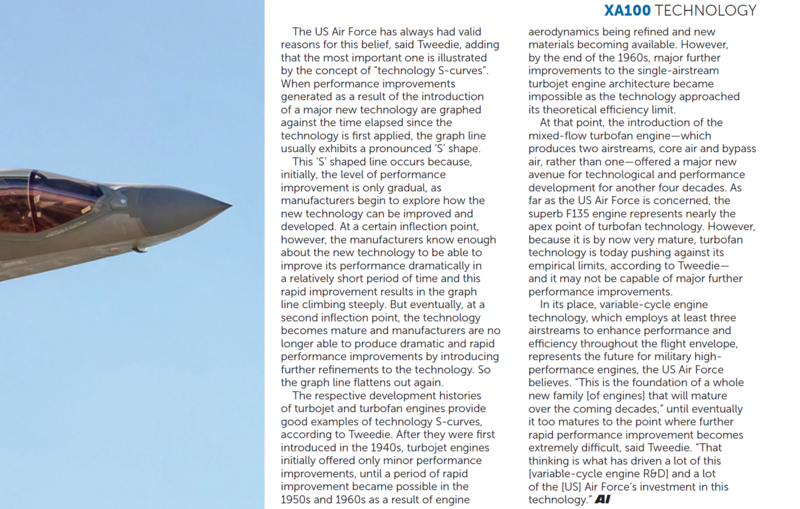

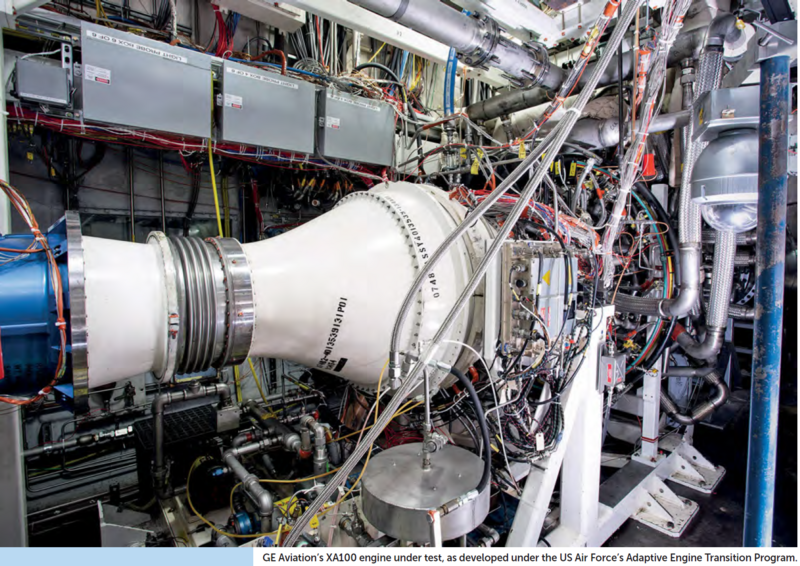
Phase 1 - Aimed at F-35 (and probably also B-21)
Phase 2 - Though they don't say it, this is probably aimed at 6th generation fighter
Given how much the airframe and engine integration is going to matter with Adaptive Cycle engines and future fighter/bomber needs given the need for massive growth in thermal management and electrical power for mission systems and directed enregy weapons, I guess you really have to integrate the airframers and the engine OEMs from day-1 (design airframe and CONOPS alongside the engine instead of letting engines take the lead as was the case in the prior generations) or else it won't work out well....






Re: US military, technology, arms, tactics
The U.S. Navy Wants 32 More Nuclear Attack Submarines in the Next 15 Years
All in the plan to get to a 355 ship navy.
https://nationalinterest.org/blog/buzz/ ... ears-49442
All in the plan to get to a 355 ship navy.
https://nationalinterest.org/blog/buzz/ ... ears-49442
Re: US military, technology, arms, tactics
The US Navy currently buys two SSN's a year..That times 15 comes out to 30. They committed to a third SSN next year so that makes it 31. So how is this news National Interest? 
Re: US military, technology, arms, tactics
And thereby diminishing chances of the F-35 for us.. More Rafales are most welcome 
US halts F-35 equipment to Turkey, protests its plans to buy from Russia
US halts F-35 equipment to Turkey, protests its plans to buy from Russia
U.S. officials told their Turkish counterparts they will not receive further shipments of F-35 related equipment needed to prepare for the arrival of the stealthy jet, two sources familiar with the situation told Reuters on Monday.
The Pentagon confirmed the Reuters report that the equipment delivery had been stopped.
"Pending an unequivocal Turkish decision to forgo delivery of the S-400, deliveries and activities associated with the stand-up of Turkey's F-35 operational capability have been suspended," Air Force Lieutenant Colonel Mike Andrews, a Defense Department spokesman, said in a statement.
Re: US military, technology, arms, tactics
does the "known thermal management challenges the F-35 has today" in page1 of that scan refer to the huge infra red signature presented by the engine nozzle esp in afterburner mode?
they should think of flat 2D nozzle like raptor to better shroud this?
they should think of flat 2D nozzle like raptor to better shroud this?
Re: US military, technology, arms, tactics
You may have seen a FLIR image at a low altitude air-show display. This is not how the jet will operate when at 35,000 ft and in Mil Power. RF reduction is utilized on the F-135 engine and even nozzle assembly and it is quite possible that other IR measures are also employed akin to the F-22A.
The thermal issues have to do with physical heat dissipation because of the highly electric nature of the jet and the internal mission system loads. This is not a problem in most instances but it is a problem when flying certain profiles like low altitude in some certain fuel states and high afterburner use. A third stream engine that can use the cool air from it to augment the other heat sink devices and strategies on the jet is viewed as one major way to get better thermals on the jet.
The power and cooling growth from 4th generation aircraft like the F-16 and F-15 to the 5th generation aircraft like the F-35 and F-22 has been quite dramatic as has been the need for thermal management. With exponentially higher pulsed power requirements coming on with 6th/Next Gen systems for applications like Directed Energy Weapons this further pushes the edge of how you can offload the heat generated by all that and will be a major design challenge confronting developers of those aircraft.

The thermal issues have to do with physical heat dissipation because of the highly electric nature of the jet and the internal mission system loads. This is not a problem in most instances but it is a problem when flying certain profiles like low altitude in some certain fuel states and high afterburner use. A third stream engine that can use the cool air from it to augment the other heat sink devices and strategies on the jet is viewed as one major way to get better thermals on the jet.
The power and cooling growth from 4th generation aircraft like the F-16 and F-15 to the 5th generation aircraft like the F-35 and F-22 has been quite dramatic as has been the need for thermal management. With exponentially higher pulsed power requirements coming on with 6th/Next Gen systems for applications like Directed Energy Weapons this further pushes the edge of how you can offload the heat generated by all that and will be a major design challenge confronting developers of those aircraft.

Re: US military, technology, arms, tactics
Based on a recent Jane's US budget briefing, it seems one of the sensors chosen as a long range surveillance sensor for the USAF's ARTS (Advanced Radar Threat System) is a derivative of the Lockheed TPYX radar. The ARTS V1 and 2 will be a family of long range low frequency surveillance radar, a high frequency threat emitter (to simulate FCR) and a large diameter MWIR passive sensor...Additional shorter and longer ranged sensors would be added in versions 3 and 4 to simulate SHORAAD and other layered defenses....
https://www.lockheedmartin.com/content/ ... IZE_v9.pdf
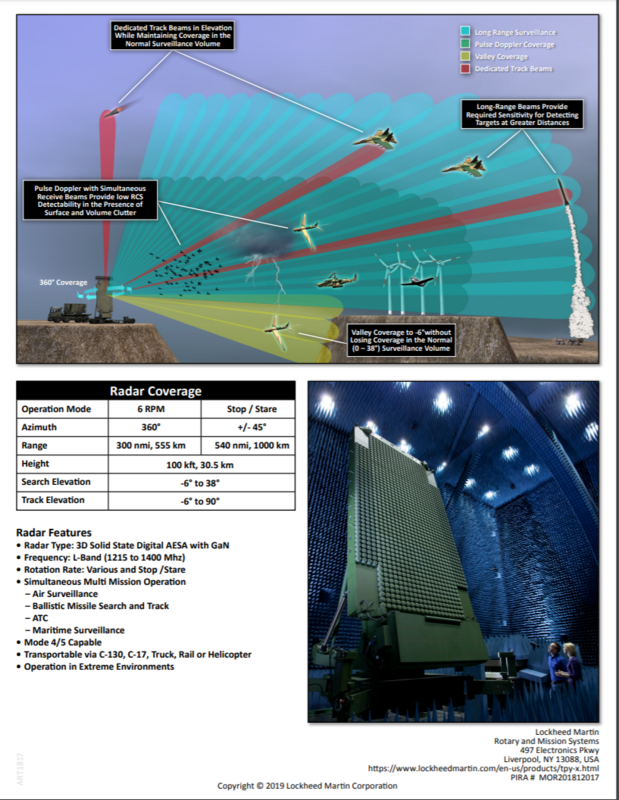
More on ARTS V1 and V2 -
https://www.lockheedmartin.com/content/ ... IZE_v9.pdf

More on ARTS V1 and V2 -
Lockheed Martin to build advanced threat radar to help F-35 pilots evade modern anti-aircraft missiles
June 14, 2017
By John Keller
Editor
HILL AIR FORCE BASE, Utah – Radar experts at Lockheed Martin Corp. are designing a mobile advanced radar system to help pilots of the F-35 joint strike fighter learn to operate safely in hostile areas guarded by modern radar-guided surface-to-air missiles.
Officials of the Air Force Life Cycle Management Center at Hill Air Force Base, Utah, announced a $104.6 million 10-year contract Monday to the Lockheed Martin Missiles and Fire Control segment in Grand Prairie, Texas for the Advanced Radar Threat System Variant 2 (ARTS-V2).
The ARTS-V2 is to be a ruggedized mobile system designed to emulate radar-guided surface-to-air missile threats like the Russian-made SA-10, SA-12, and SA-20, which are built to strike at everything from low-flying drones and stealth cruise missiles to high-altitude reconnaissance airplanes and distant sensor platforms...
Lockheed Martin will build the ARTS-V2 to provide threat-representative radar tracking and reaction such as acquiring, tracking, and engaging several aircraft simultaneously with representative receiver, processor, and electronic counter-countermeasures.
The system will emulate advanced anti-aircraft missile radiated power, threat signals, antenna patterns, operational modes, and threat tactics, and can send real-time radar data to the Digital Integrated Air Defense System (DIADS)-controlled threat environment at the Range Control Center (RCC). ARTS-V2 will provide multi-spectral threat representation.
The ARTS-V2 is part of the overall Advanced Radar Threat System (ARTS) project to develop and field high-fidelity threat phased array radar for live, virtual, constructive aircrew training for anti-access and area-denial environments.
ARTS will provide the advanced capabilities necessary to train aircrews in the employment of F-35 aircraft against foreign fielded live double-digit surface-to-air missile threat systems. The program consists of the strategic long-range ARTS-V1 and the tactical short-range ARTS-V2 systems. The solicitation for the ARTS-V1 system was released in January.
LINK
Re: US military, technology, arms, tactics
U.S. Missile Defense Agency wants a new 1,000 kilowatt-class laser weapons
The U.S. Missile Defense Agency is looking for information on a 1,000 kW-class electrically-pumped laser for defending the United States, its deployed forces, allies, and friends against all ranges of enemy ballistic missiles in all phases of flight.
The post on the federal business opportunities website is asking industry for information on a capability to demonstrate a 1,000 kW-class electrically-pumped laser in the 2025-26 timeframe.
Missile Defense Agency does not provide a specific platform or strategic mission at this time. The proposed ground demonstrator laser system would be designed to have technology maturation and lightweight engineering paths to potential future platforms.
According to Pentagon’s moted, the Ballistic Missile Defense System architecture will consist of weapons, sensors, command and control, battle management, communications, and integrating functions that provide, to any Combatant Command, a rapidly deployable missile defense system which will defeat ballistic missiles of all types and ranges while in all phases of flight.
Re: US military, technology, arms, tactics
This is going to be one big competition given how much larger this class of helos is compared to the scout helo competion (FARA). The requirements appear to favor the Bell designed tilt rotor but I guess there will be some trade space in the eventual RFP for balance -
US Army Reveals Official Requirements For Future Black Hawk Replacement
US Army Reveals Official Requirements For Future Black Hawk Replacement
Provided the U.S. Army sticks to its own schedule, it could have a speedy, long-range Black Hawk replacement within 10 years, as long as the Future Long-Range Assault Aircraft (FLRAA) comes in at about $40 million per copy, according to a request for information from industry published April 4.
A contract for FLRRA should be awarded in late fiscal 2021 followed by a preliminary design review the following year and a critical design review in fiscal 2024. First flight is to occur in the second half of fiscal 2024, the Army’s published program schedule says.
Whichever aircraft the Army chooses should come in at no more than $43 million a copy in 2018 dollars, according to the RFI.
For basic performance parameters, the Army is looking for a vertical takeoff and landing aircraft capable of 100 percent maximum continuous power to perform a 500 feet-per-minute vertical rate of climb from a hover out of ground effect at mission start, at an altitude of 6,000 feet on a 95-degree Fahrenheit day, with 12 passengers and sufficient fuel to achieve a 122 nm combat radius and a 30-minute reserve.
A rundown of the Army’s other objective requirements:
10-12 passengers, ideally 12 crash-resistant seats at least 23 inches wide
300 nautical mile unrefueled combat radius
2,440 nm one-way unrefueled range
280 knots maximum continuous cruise speed at max power
Minimum 300 pounds cabin floor capacity per square foot with tie-downs capable of holding 5,000 pounds each
External cargo hook with no less than 13,100 pounds capacity
Capable of 200 flight hours in 60 days between scheduled field maintenance
Structural engineering that will allow for installation of an in-flight refueling system
92 percent operational readiness
FLRAA is structured as a multi-service program with the Army in the lead and Special Operations Command (SOCOM) and the Marine Corps acquisition programs following about two years later. The RFI lays out specific requirements both for SOCOM and Marines.
Topping SOCOM’s bespoke list is structural engineering to allow for aerial refueling and installation of a probe, plumbing pumps and fuel management system so the aircraft can both give and receive gas in flight. A Special Operations variant also should fit inside a single C-17.
The Marine Corps is considering both a modified version of the Army’s FLRAA and a possible stand-alone derivative “if considered unfeasible or cost prohibitive to modify the Army variant,” according to the RFI. Proposals for the Marine Corps FLRAA should include both an attack and utility variant, of which the service plans to buy 349, the RFI says.
Most of the Marine-unique requirements relate to outfitting the aircraft against the harsh marine environments where they operate, like the “ability to operate in all weather conditions and … the ability to operate from and be based on all L-class ships and meet all ship suitability requirements.”
The Marine Corps wants an unrefueled combat radius of 450 nm with 30 minutes on station at maximum payload on various missions — attack, V-22 escort, utility, troop insertion — profiled in the document. The Marine’s also want a maximum continuous cruise speed of 295 knots at 90 percent power and a sprint speed of 330 knots.
Both the attack and utility version of the Marine Corps variant will be heavily armed or capable of carrying multiple offensive weapons, including a turreted or fixed gun system, Hellfire or Joint Air-to-Ground missiles, guided or unguided rockets and the ability to launch tactical unmanned aerial vehicles in flight.
The two most likely competitors for FLRAA are the operational prototype aircraft participating in the Army’s ongoing Joint Multi-Role Technology Demonstration (JMR-TD) program. They are Bell’s V-280 Valor advanced tiltrotor and the Sikorsky-Boeing SB-1 Defiant coaxial-rotor compound helicopter.
The Army has been granted $20 million to continue that work — Karem Aircraft and AVX also are involved — in its fiscal 2020 spending plan and included $75.6 million more on its list of unfunded priorities that would “expand” JMR and possibly quicken entry to a FLRAA competition. Plans are to choose up to three manufacturers to build competitive prototypes.
Re: US military, technology, arms, tactics
^ Quite a detailed RFI. Still going over the requirements but they seem to echo what had been previously communicated to the design teams..pretty much twice as fast and twice as far before they look at other things..I believe both Bell and Sikorsky/Boeing should be able to compete with these requirements by sticking to the basic designs in the two technology demonstrators currently flying (V-280 and SB-1) which is probably why the timelines are compressed as 2024 first flight for an EMD numbered aircraft should be achievable given the tech demonstration phase would be wrapping up by mid-end of next year (Bell will probably wrap up by end of this year with perhaps some extra demonstrations scheduled for next year like an optionally manned mission system swap for unmanned operations)
From the requirements document -
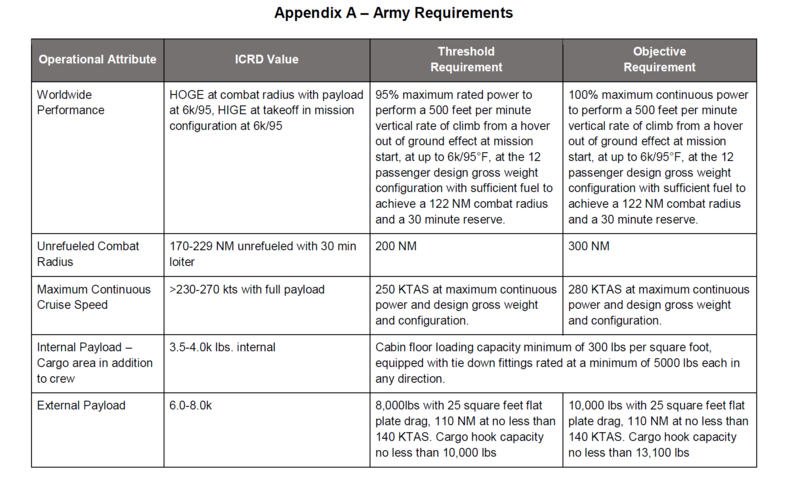
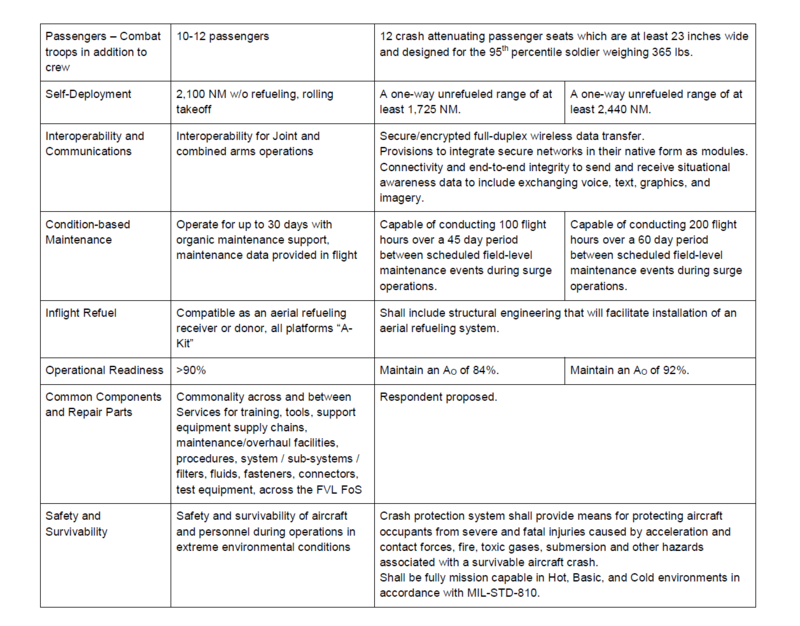
Also with the Ferry range requirements, these things would be able to self-deploy across theaters (and probably also in between COCOM's with IFR) which is going to be very important given some of the ranges in the Pacific theater -
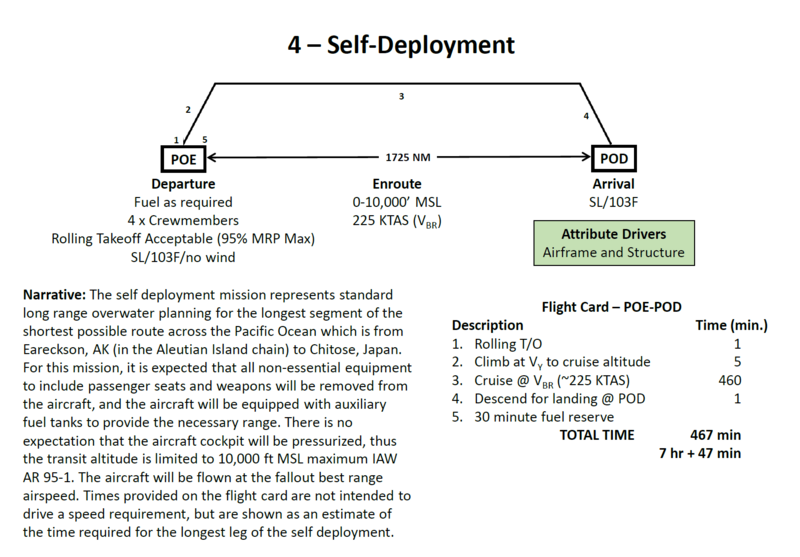
There are supplemental USMC requirements are probably even more favorable to the V-280 given that the Marines are looking at a cruise speed closer to 300 knots..
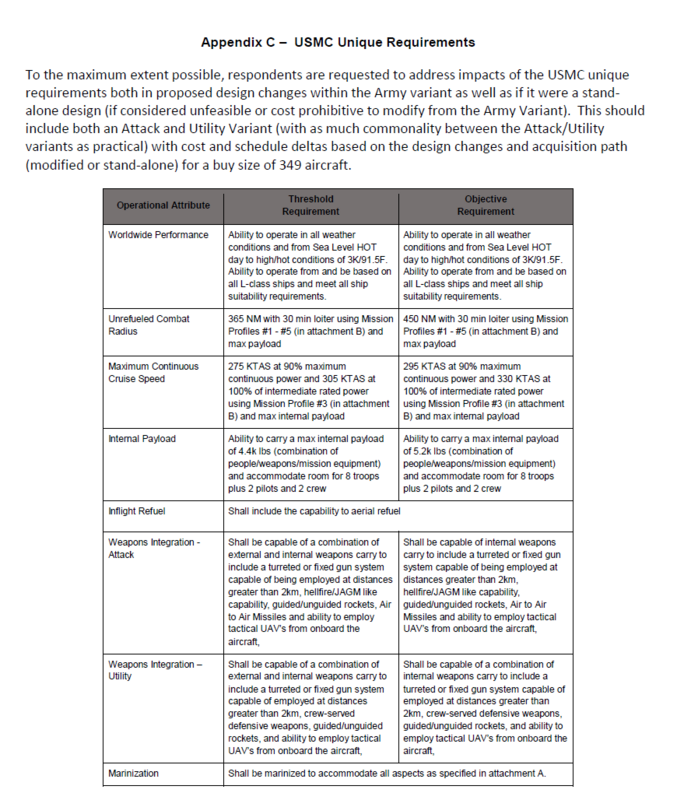
From the requirements document -


Also with the Ferry range requirements, these things would be able to self-deploy across theaters (and probably also in between COCOM's with IFR) which is going to be very important given some of the ranges in the Pacific theater -

There are supplemental USMC requirements are probably even more favorable to the V-280 given that the Marines are looking at a cruise speed closer to 300 knots..

Re: US military, technology, arms, tactics
NASA Selects Lockheed Martin Skunk Works® To Build X-Plane
https://news.lockheedmartin.com/2018-04 ... ld-X-Plane

https://news.lockheedmartin.com/2018-04 ... ld-X-Plane

Re: US military, technology, arms, tactics
About JSTARS
The U.S. Air Force Has a Plan to Crush Russia's Su-57 Stealth Fighter and Deadly S-400s
https://nationalinterest.org/blog/buzz/ ... 400s-50632
The U.S. Air Force Has a Plan to Crush Russia's Su-57 Stealth Fighter and Deadly S-400s
https://nationalinterest.org/blog/buzz/ ... 400s-50632
Re: US military, technology, arms, tactics
Saik, I would stay away Kris Osborne or Dave Majumdar or anything that National Interest puts out. Aviation Week, and other serious publications have much better coverage on JSTARS alternative, without the tabloid garbage that this outlet puts out.
Jane's coverage on the FVL Mid program -
US Army issues RFI for Future Long-Range Assault Aircraft
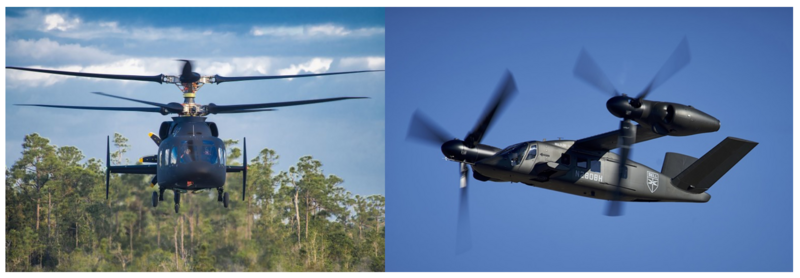
My guess is that Sikorsky/Lockhed/bags the FARA competition with its S-97 Raider derived proposal while Bell wins the medium category with a V-280 derivative with the potential of an unmanned V-247 as well. I don't think Sikorsky's design can compete when it comes to range and speed and Bell has been killing it in flight testing over the last year...
Jane's coverage on the FVL Mid program -
US Army issues RFI for Future Long-Range Assault Aircraft
The US Army has issued a request for information (RFI) for a Future Long-Range Assault Aircraft (FLRAA) to enter service in 2030.
The RFI, released on 4 April, covers the Sikorsky UH-60 Black Hawk and Boeing AH-64 Apache-replacement that was previously known as Capability (Cap) Set 3 (Assault)/Future Vertical Lift (FVL)-Medium.
As noted in the solicitation, the FLRAA performance parameters broadly mirror those of Cap Set 3 (Assault)/FVL-Medium, for which the Joint MultiRole – Technology Demonstrator (JMR-TD) programme has seen Bell develop the V-280 Valor tiltrotor and Boeing-Sikorsky the SB>1 Defiant co-axial compound helicopter.
While the FLRAA effort will be led by the US Army, the US Special Operations Command (USSOCOM) and the US Marine Corps (USMC) will look to follow with their own procurements approximately two years after the army. FLRAA mission sets will include utility, transport, troop insertion and exfiltration, close air support, medical evacuation, and V-22 tiltrotor escort.
Specifications laid out by the army include a hover-out-of-ground-effect (HOGE) at 6,000 ft and 95°F (the army’s 6K/95 benchmark) at combat radius and with a mission payload; an unrefuelled combat radius of 170–229 n miles, with 30-minute loiter; a maximum continuous cruise speed of 230–270 kt with full payload; an internal payload of 3,500–4,000 lb; an external payload of 6,000–8,000 lb; capacity for 10–12 passengers; to self-deploy 2,100 n miles without refuelling and with a rolling take-off; interoperability for joint operations; the ability to operate for up to 30 days without external support, in-flight refuelling receiver and donor; an operational readiness-rate in excess of 90%; commonality with other FVL-family aircraft; and survivability.
Further to these baseline army specifications, the USSOCOM requires that the aircraft be air-transportable by Boeing C-17 Globemaster III strategic airlifter. For the USMC, the aircraft’s threshold requirements include the ability to operate in a 3K/91.5 environment from littoral-class ships; a 365 n mile combat radius with 30-minute loiter time; a 275 kt top speed; an internal payload of 4,400 lb; capacity for two pilots, two crew, and 8 passengers; aerial refuelling; be able to carry external and internal weapons that include an AGM-114 Hellfire/Joint Air-to-Ground Missile (JAGM)-type air-to-surface missile capability; manned-unmanned teaming (MUM-T); and be fully marinised for shipborne operations.
The FLRAA timeline will see a contract award in the fourth quarter (Q4) of fiscal year (FY) 2021; a preliminary design review (PDR) in Q2 FY2023; a first flight in Q3 FY2024; and a critical design review (CDR) in Q4 FY2024. The first unit will be equipped in Q2 FY2030, with the type expected to remain in service through to FY2080.
The Department of Defense (DoD) has launched its JMR-TD/FVL programme to create a family of platforms to replace its current helicopters. This family is to be divided into a scout-class Future Attack Reconnaissance Aircraft (FARA), FVL-Medium/FLRAA (to replace the Apache and Black Hawk platforms), and FVL Heavy (to replace the Chinook).
In all, FVL aims to replace more than 4,000 of the US military’s 1970s-era utility, transport, and attack helicopters over the coming decades.

My guess is that Sikorsky/Lockhed/bags the FARA competition with its S-97 Raider derived proposal while Bell wins the medium category with a V-280 derivative with the potential of an unmanned V-247 as well. I don't think Sikorsky's design can compete when it comes to range and speed and Bell has been killing it in flight testing over the last year...
Re: US military, technology, arms, tactics
An aspect of the last Ground Based Mid Course defense salvo test against an ICBM target that had not been previously discussed but was revealed during Congressional hearing recently -
AEGIS was present and running a virtual intercept as a dress rehearsal for the first SM3 IIA ICBM intercept attempt that is currently slated for demonstration in late 2019, or 2020. Also, note the F-35. This is now also becoming common with either the aircraft or its mission systems involved in many MDA tests -

LINK
The ability of a multi- DAS sensor 3D track generation has already been demonstrated by using existing F-35 sub-systems and this is only expected to grow with the Next Gen. DAS sensors coming on board in the early 2020's.
Next Gen. DAS -
Also an interesting dynamic with 5th generation aircraft - Unlike the older gen aircraft which tended to add weight as iterative capability/technology was spiraled into the programs these aircraft either retain an unchanged OML and weight margins or end up slightly favorable. All hardware changes on the F-35 block 4 for example are weight drag neutral or favorable. On the flip side, as capability is enhanced and products improved thermal and electrical limits are probably going to be a larger concern..
AEGIS was present and running a virtual intercept as a dress rehearsal for the first SM3 IIA ICBM intercept attempt that is currently slated for demonstration in late 2019, or 2020. Also, note the F-35. This is now also becoming common with either the aircraft or its mission systems involved in many MDA tests -

LINK
The ability of a multi- DAS sensor 3D track generation has already been demonstrated by using existing F-35 sub-systems and this is only expected to grow with the Next Gen. DAS sensors coming on board in the early 2020's.
Next Gen. DAS -
While F-35 sensor BMDS integration is primarily focused towards BPI and TPI missions it probably has some residual capability to help in some other cases as well, particularly when other tracking assets may be lacking. While not directly employing interceptors (yet anyway though that has been studied extensively as well) one would assume that it has been deemed that an F-35/DAS/DAS+Radar generated track and track transmission is quicker when compared to other Space or ground based means and this can potentially shave off vital time allowing systems like THAAD to engage earlier than they previously could. Same would apply to PATRIOT though to a lesser extent.Ulmer highlighted the recent award to Raytheon of a contract to replace Northrop Grumman as the supplier of the Distributed Aperture System (DAS) on future F-35 production aircraft. Raytheon’s product is twice as capable and five times more reliable, while saving 10 to 15 pounds (4.5 kg to 6.8 kg) of weight, he said. Also coming soon is LM’s own automatic ground collision avoidance system (auto-GCAS). This was developed for the F-16, and its integration into the F-35 is proving easier than anticipated.
https://www.ainonline.com/aviation-news ... ustainment
Also an interesting dynamic with 5th generation aircraft - Unlike the older gen aircraft which tended to add weight as iterative capability/technology was spiraled into the programs these aircraft either retain an unchanged OML and weight margins or end up slightly favorable. All hardware changes on the F-35 block 4 for example are weight drag neutral or favorable. On the flip side, as capability is enhanced and products improved thermal and electrical limits are probably going to be a larger concern..
Re: US military, technology, arms, tactics
Hmm with those Pylons and external fuel tanks, stealth will definitely be compromised, while Tanks can be dropped pylons can't, so these can be used in ferry flights but not actual combat
Re: US military, technology, arms, tactics
I wonder why no one ever thought of that..Aditya_V wrote:
while Tanks can be dropped pylons can't, so these can be used in ferry flights but not actual combat
The pylon itself is designed for minimal impact on aircraft performance. If it becomes necessary for the pilot to jettison the external stores, the entire pylon is jettisoned along with the tank or missile launch rails. The pylon has an aft pivot, so when the stores are jettisoned, the forward attach point is released first, the pylon rotates on the pivot, and then the aft pivot is released. This motion allows the pylon, along with the tank or launch rail to clear the aircraft when it is released into the slipstream. LINK
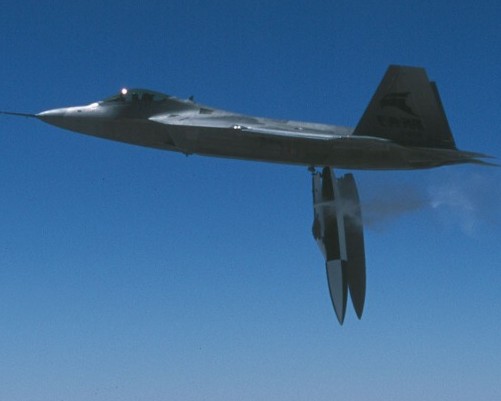
Re: US military, technology, arms, tactics
Thanks, you lean something everyday
Re: US military, technology, arms, tactics
The lowest maximum altitude estimate I've seen for the IIA is still from official sources or people who have spent quite a bit of time going through official data etc is still well above 1000 km. There is a reason why "let's shoot everything down" hawks in the US Congress (like Tom Cotton) aren't rallying up budget support for an Air Launched ASAT capability revival. It is probably because with the current AEGIS BMD equipped fleet they have in place all the capability they'll need to put all of China's LEO sats at risk. With SM3 IIA approval they finally have the interceptors to cover that envelope as well.Singha wrote:the sm3 block IIA the fat 21" diameter model that is JV of raytheon and mitsubishi claims per this chart to be 600km capable.
the other variants are 200-300km
their anti ICBM play is here https://missilethreat.csis.org/defsys/gbi/
The current Aegis interceptors SM-3 IA/
IB can reach only the relatively few satellites in
orbits with perigees at or below 600 km altitude. However, even using a conservative estimate of the burnout speed (4.5 km/s), SM-3
Block IIA interceptors would be able to reach
the vast majority of LEO satellites (see Figure 2).11 Interceptors with burnout speeds at
the high range of estimates for the SM-3 IIA
(5.5 km/s) would be able to reach any satellite in LEO, as would GMD interceptors.
https://www.ucsusa.org/sites/default/fi ... ellite.pdf

Re: US military, technology, arms, tactics
https://www.pyneonline.com.au/media-cen ... 0005757279
Are they saying they (oz) are getting 72 F-35As for $3.3 billion?
Are they saying they (oz) are getting 72 F-35As for $3.3 billion?
Re: US military, technology, arms, tactics
No. I assume you added 2 and 1.3 Billion mentioned in the article. That is the amount of industrial work on the JSF Australia (Australian OEMs) would have gotten by 2023.SaiK wrote:https://www.pyneonline.com.au/media-cen ... 0005757279
Are they saying they (oz) are getting 72 F-35As for $3.3 billion?
Re: US military, technology, arms, tactics
Milestone and contract award boost USAF Eagle upgrade effort -Jane's International Defence Review - Gareth Jennings, Londonbrar_w wrote:More details on EPAWSS ( Eagle Passive/Active Warning and Survivability System) design from a 2015 article from the Association of Old Crows (JED). It essentially retains the all digital architecture found on the export advanced strike eagles (F-15SA and QA) but borrows a lot of the EW components and software from the F-22A and F-35 programs while introducing Gallium Nitride (GaN) based self protection jamming antennas for its active component. Boeing is currently on contract to achieve IOC with the first 24 F-15E's equipped with EPAWSS by late 2021 - Mid 2022 time frame.
09 April, 2019
The US Air Force (USAF) effort to upgrade its Boeing F-15 Eagle combat aircraft took a step forward on 8 April, with a significant developmental milestone and a further contract award for two of the proposed enhancements.
Boeing announced that the Eagle Passive/Active Warning and Survivability System (EPAWSS) upgrade had made its maiden flight on an F-15 testbed, while on the same day the Department of Defense (DoD) contracted the company for low-rate initial production (LRIP) lot 3 of the Advanced Display Core Processor II (ADCP II) for the aircraft.
The EPAWSS flight took place aboard an aircraft flown by the USAF’s 40th Flight Test Squadron located at Eglin Air Force (AFB) in Florida, and was described by Boeing as being “successful”. Developed by BAE Systems as a sub-contractor to Boeing, the EPAWSS is designed to sample the radio-frequency (RF) spectrum, identify threats, prioritise, and allocate jamming resources against the threats, and will replace the 1980s-vintage Tactical Electronic Warfare Suite (TEWS) currently fitted to the USAF’s more than 400 F-15C and F-15E-variant Eagles.
At the same time as the EPAWSS maiden flight, the DoD awarded Boeing USD91.3 million for LRIP 3 of the ADCP II boxes. The ADCP II (also known as Suite 9) is billed by Boeing as the world’s fastest flight mission computer, capable of processing up to 87 billion instructions per second. “This is an important enhancement for the F-15, as it unleashes the ‘horsepower’ of the electronic warfare suite currently being developed,” the company has previously told Jane’s .
Both the EPAWSS and the ADCP II are part of a wider USD12 billion modernisation programme taking place across the range of Eagle types being flown in the USAF inventory. As the largest operator of the Eagle by some margin, the USAF fields the platform in its F-15C air-superiority guise; in its F-15D operational-trainer guise; and in its F-15E Strike Eagle ground-attack guise.
The USAF’s upgrade roadmap is funded until 2025, with several enhancements, such as the Joint Helmet Mounted Cueing System (JHMCS), already carried out and fielded. Other enhancements comprise a new advanced mission computer, conformal fuel tanks (CFTs) for the Air National Guard, the infrared search-and-track (IRST) Legion Pod, replacement of the current mechanically scanned (M-Scan) radar with new active electronically scanned array (AESA) systems, and a new ‘gateway’ communications system known as Talon HATE.
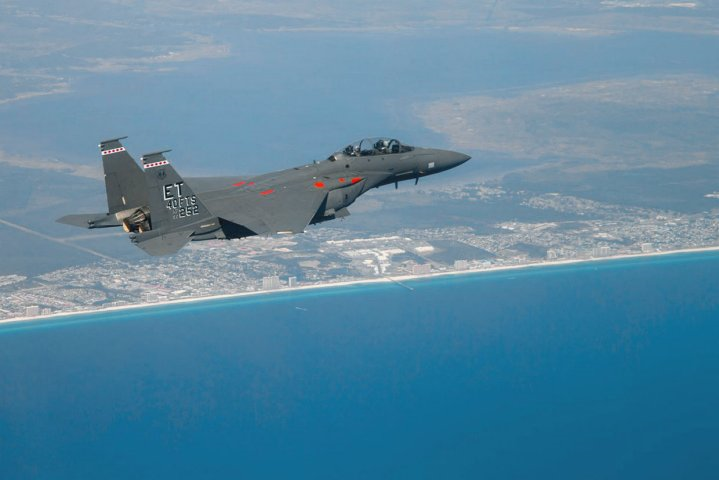
Good progress on the F-15E and ANG F-15C upgrades. About 250 AESA radars are fielded on these two types with the USAF with another 100 or so to go as part of the original program of record. The new processor, new Electronic Warfare/Attack suite and the new mission computers are now in LRIP contract and so is the Legion pod. Talon Hate and new cockpit displays will be the last two elements that close out the modernization program on the Strike Eagles...The F-15X's if ordered will have all these things from the start.
Re: US military, technology, arms, tactics
Japenese F 35 crashes, wonder what is the crash record of F-22 and F-35.
https://www.nytimes.com/2019/04/10/worl ... %20Pacific
https://www.nytimes.com/2019/04/10/worl ... %20Pacific
Re: US military, technology, arms, tactics
It is actually quite easy to find on google etc.Aditya_V wrote:Japenese F 35 crashes, wonder what is the crash record of F-22 and F-35.
This is the second F-35 crash and the first for the F-35A type. More than 390 aircraft have been delivered till date, and the number will reach nearly 500 by the end of the year, and 900-1000 in the next 3-4 or so years. This is 2X+ the number of F-22A's or 3X the number of Rafale's by year end.
With more and more operators now having declared IOC and flying it out of more than a dozen air bases around the world at full post IOC training tempo (180-300 hrs a year for most users), you will unfortunately begin to see these things happen just like you do with other aircraft types around the world. Crashes or other serious incidents are generally measured in #/XXX,XXX hours so that you can develop some frame of reference over time and compare one type to another. I don't know how many cumulative flight hours the F-35 fleet has flown but the number should be approaching 200,000 or at least should be there by the end of 2019.
More F-22A crashes have happened than F-35A. It has also been flying longer though more than twice as many F-35's exist currently. The first F-22A crash (of a non test article) actually happened prior to type's formal IOC with the USAF. It will be difficult to compare two aircraft though. One exists in very small numbers at a handful of US air-bases while the latter is measured in multiples of the former as far as aircraft's flying on any given day and exists with many customers around the world, operating in different conditions etc etc.
A good frame of reference could be to compare it to the F-16 when it was declared operational and a couple of hundred aircraft were being delivered to operators around the world each year. That is the closest you are going to get to the scale. Even that will have its limits. No F-16 version comes even close to the complexity of the F-35B and STOVL opeations out at sea are concerned. The USMC out in the South China Sea are on their 3rd deployment aboard the L class ships with one deployment seeing more than 100 combat sorties over Iraq and Syria. So I guess a good gen. to gen. comparison would be to somehow model safety records of F-16, F/A-18 and Harriers and see how the current gen replacements fare to those types either over their service life or during the initial phases of their induction.
On the program side, the JSF program has executed the longest and safest developmental flight test program of any prior US run fighter effort with 9200 hours and 17000 sorties flown by more than 20 aircraft without a single test aircraft loss. The ATF program lost a YF-22 during development though that aircraft should not have been flying (kept on longer than originally designed).
Re: US military, technology, arms, tactics
All valid points but want to bring it in prespective when IAF planes crash and to be kept in mind when brought out by western / indian media in biased reports
Re: US military, technology, arms, tactics
As I said, crashes or other incidents that go beyond a threshold of damage should be strictly measured over time by seeing # of incidents over flight hours as a reference. Short term spikes should be looked into to see if there are linkages and all competent root cause analysis inquiries would do that. Media generally lacks the domain specific expertise to frame reports on that but since we are all interested in defense forces and military aviation we should be easy to pick up on that.Aditya_V wrote:All valid points but want to bring it in prespective when IAF planes crash and to be kept in mind when brought out by western / indian media in biased reports
Re: US military, technology, arms, tactics
Next Milestone for Future B-21 Bomber? First Flight
The Air Force's stealthy new bomber is getting ready to take its first flight.
"Our next major milestone is first flight," Lt. Gen. Arnold Bunch, the Air Force's military deputy to the Office of the Assistant Secretary for Acquisition at the Pentagon, said of the B-21 Long Range Strategic Bomber program.
During a Senate Armed Services subcommittee on airland hearing Tuesday, Bunch told lawmakers the program has met all developmental checkpoints and is on schedule.
While he didn't reveal when the flight will take place, officials have said the first B-21 is expected to reach initial operating capability in the mid-2020s.
Re: US military, technology, arms, tactics
US Navy Next Gen. Jammer (Mid Band) LRIP-1 Pod 1. Pod 2 is being assembled in the background -brar_w wrote:A couple of screen grabs from a recent Jane's IHS article covering the development of the Next Generation Jammer Increment 1 and the competition for the NGJ Increment 2. Based on my understanding and observation this is the first time the program office or an OEM has referenced the power level targets for the new module which explains why the current pods are so much larger than the legacy ones they replace. For reference, the current ALQ-99 pods and the associated RAT generate an output of around 7-10 kW....

https://twitter.com/Raytheon_Jobs/statu ... 1044248577
Re: US military, technology, arms, tactics
THAAD Heading For European Deployment
The U.S. Army is to deploy a Terminal High Altitude Area Defense (THAAD) system into Romania, where it will temporarily take over missile defense duties from the Aegis Ashore system located there.
The deployment, requested by NATO, will cover the duties of the Aegis Ashore system at Deveselu, which is being deactivated for scheduled maintenance and updates, a U.S. European Command (EUCOM) press release said on April 11.
EUCOM said the THAAD system will be integrated into NATO’s ballistic missile defense architecture and be under the control of NATO’s Allied Air Command for the duration of the deployment, which is planned for several weeks this summer.
The deployment is understood to be the first for THAAD into the European theater. The system has been regularly deployed into the Asia Pacific and the Middle East, including a recent training deployment to Israel.
Re: US military, technology, arms, tactics
Joint Air-to-Ground Missile (JAGM-F) is going to be integrated on the F-35. It will be using the BRU-61/A carriage system (the same used by SDB) so that gets 8 Missiles in the internal weapons bay or as many as 16 externally for a total of 24 Missiles (plus two AMRAAM's and 2 Aim-9X/ASRAAMs) in a Beast "CAS" mode. I believe the RAF intends to do the same with Brimstone which will also be used for the same sort of targets.

The US Army just released a pre-contract notice in preparation of its order of the first 3,000 JAGM missiles to be produced in 2020 and 2021 (1500 each). Long lead contracts were awarded in prior years.
Here are some of the large Munition buys funded in the most recent US Defense budget for FY20. Production for programs like JDAM, GMLRS and Hellfire is now at Maximum capacity -
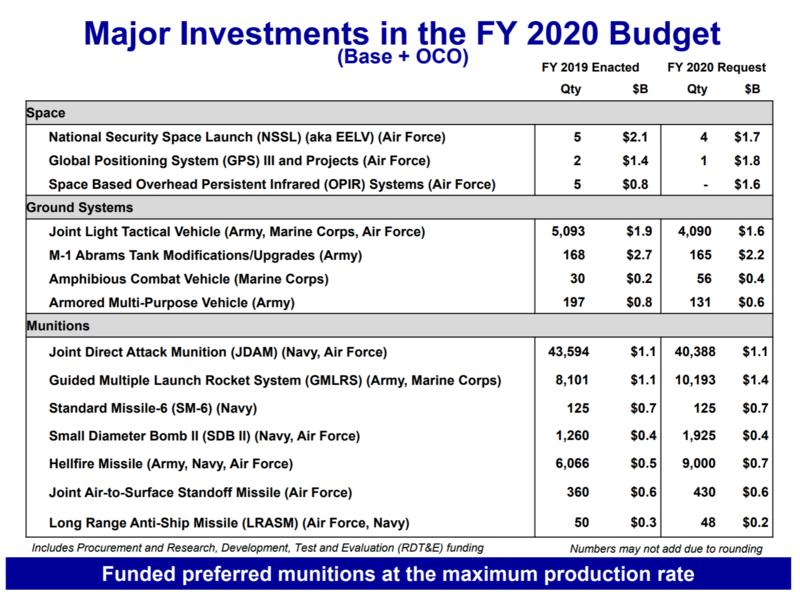
The first amendment passed by the full committee (EB7 117r1) authorizes an additional $5M for JAGM-F missile studies and analysis for the Navy for their F/A-18E/F Super Hornet and F-35C aircraft, and an additional $5M on a separate line for the USMC for their F/A-18C/D, AV-8B and F-35B/C aircraft.
The second amendment (EB2 177) requests a briefing by the Department of the Navy to the committee on the services' plans for JAGM-F integration on its fighter aircraft to replace the Laser Maverick missile that will be out of inventory in the coming decade. This type of briefing request is expected when the committee authorizes additional funding, to ensure the services have a good plan moving forward.
The US Air Force has requested $31.596M in the FY19 budget to begin JAGM-F integration activities on their aircraft, and the $10M for the DoN will allow both the Navy and Marine Corps to begin their studies and analysis in concert with the Air Force in FY19 and beyond.
The JAGM-F missile is an eject-launched, fighter-capable derivative the JAGM missile that is a dual-mode seeker missile incorporating an active millimeter-wave radar and a semi-active laser seeker. The JAGM missile is a follow-on to the the Hellfire missile and will IOC on the US Army's Apache helicopter and the US Marine Corps' Cobra helicopter. LINK

The US Army just released a pre-contract notice in preparation of its order of the first 3,000 JAGM missiles to be produced in 2020 and 2021 (1500 each). Long lead contracts were awarded in prior years.
Here are some of the large Munition buys funded in the most recent US Defense budget for FY20. Production for programs like JDAM, GMLRS and Hellfire is now at Maximum capacity -

Last edited by brar_w on 15 Apr 2019 17:47, edited 1 time in total.
Re: US military, technology, arms, tactics
https://strategypage.com/military_photo ... 14582.aspx
Are the Prowlers still in service with the Marines? I thought Growlers had done away with them
Are the Prowlers still in service with the Marines? I thought Growlers had done away with them
Re: US military, technology, arms, tactics
Paul wrote:https://strategypage.com/military_photo ... 14582.aspx
Are the Prowlers still in service with the Marines? I thought Growlers had done away with them
As your link states the type was deactivated in March of this year. The Marines are not buying the Growler and will be utilizing a combination of F-35B/C's and Unmanned systems to defeat Air Defense threats in support of their mission to provide to cover for ground forces. They were never really a part of the joint forces tactical AEA mission and used those aircraft primarily to satisfy the AEA and SEAD/DEAD needs for the MAGTF.
The AEA mission resides with the US Navy (Tactical AEA via EA-18G), and the USAF (long range AEA and stand in AEA) and this supports all other services or partners that may need support. On the tactical side this is currently carried out by the USN E/A-18G's (USAF and USMC also mix their pilots into those squadrons from time to time) and USAF F-16 CJ's. The LR AEA mission is supported by EC-130 and in the future with the EC-37B. The stand-in AEA is a mission set the USAF owns.
As the F-16 begins to retire in larger number the F-35A will likely pick up that mission (from the CJs) as there are USAF acquisition and OEM run R&D projects that point to that being the case in the medium term -
New F-35A SEAD/DEAD Weapon - https://www.thedrive.com/the-war-zone/2 ... ike-weapon
More Offensive AEA payloads in the works - https://www.f35.com/news/detail/f-35-pr ... capabilityThe U.S. Air Force has revealed that it is working to turn the U.S. Navy’ s Advanced Anti-Radiation Guided Missile-Extended Range, or AARGM-ER, into a fast-flying strike weapon that its F-35A Joint Strike Fighters will be able to use against a variety of time-sensitive targets. This is something that The War Zone had thought would be the case based on previous information about this program. The new missile would give those stealthy jets, as well as other aircraft in the future, an important tool for quickly knocking down anti-access and area denial threats, as well as destroying pop-up targets on short notice.
The Lockheed Martin F-35 Lightning II Joint Strike Fighter programme is developing a pod-mounted cyber-attack system as it continues kinetic
weapons integration, the deputy programme executive officer said on 17 March.
"Industry is developing a pod that would not degrade the signature of the airplane," said Rear Admiral Randy Mahr at the Precision Strike Association conference in Springfield, Virginia.
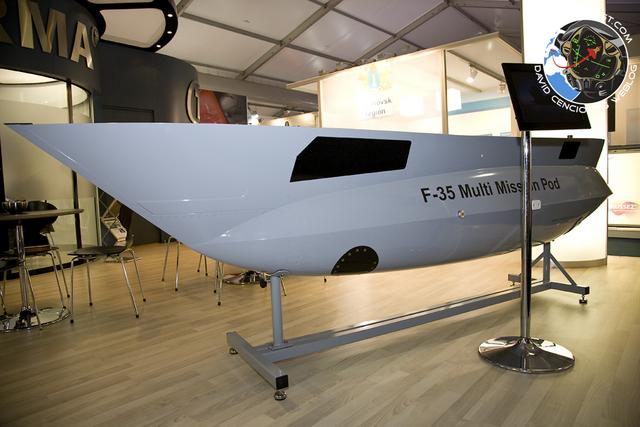

The F-16 CJ's are claimed to have been the tactical host platforms for the Suter capability so it is logical to expect the USAF to transfer that mission set to the F-35A as it becomes more prevalent within the service. If the capability is as described (offensive Cyber and network attack) then this would be developed and quietly fielded outside of the JSF program's block development schedule with very little, if any, publicity or announcements. The Multi-Mission pod developed by Terma has been flight tested and cleared as the OML remains very similar to the variant that houses the cannon for the USN and USMC aircraft so minimal flight testing would be required to clear it on the F-35A
Re: US military, technology, arms, tactics
https://www.flightglobal.com/news/artic ... nt-457481/
Greece operates the s300..so they are not worried about that ??
Greece operates the s300..so they are not worried about that ??